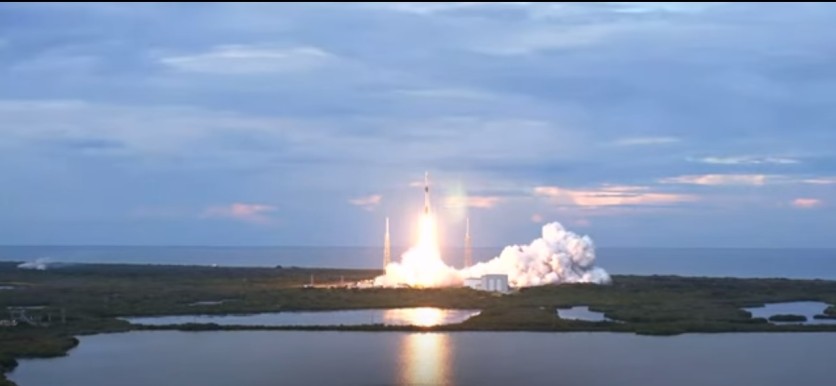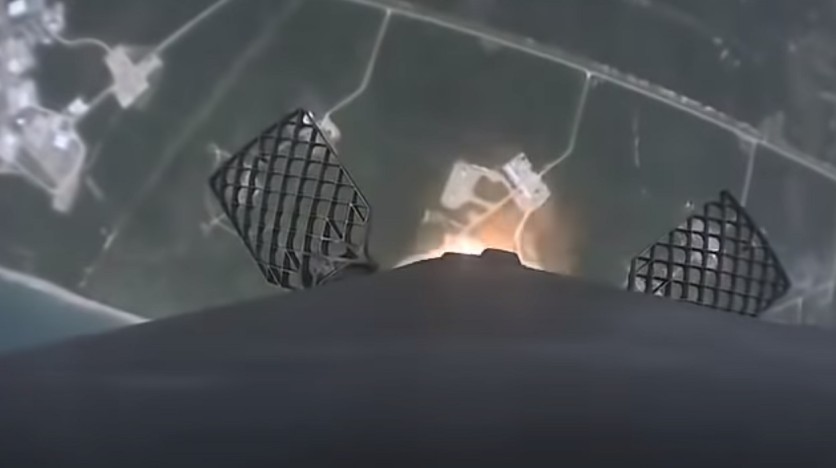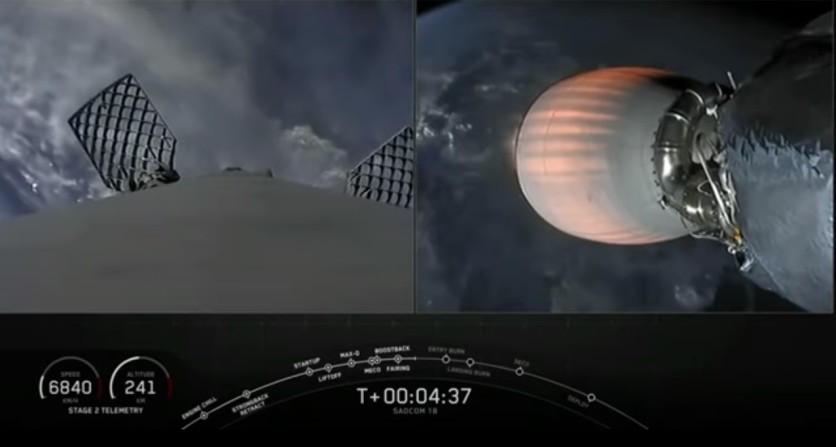
SpaceX shared an incredible new video of its recent SAOCOM-1B mission giving the audience a rocket's-eye view of the launch and landing at Cape Canaveral Space Force Station on August 30. The footage was posted on SpaceX's YouTube account on Wednesday, September 9.
SAOCOM stands for Satélite Argentino de Observación COn Microondas (Argentine Microwaves Observation Satellite), which involves a two-satellite program that costs about $600 million, including launches.

The mission involves the SpaceX Falcon 9 first stage booster called B1059.5, which carried the SAOCOM-1B, an Earth-observing satellite constructed for Argentina's Comisión Nacional de Actividades Espaciales (CONAE). This radar imager piggybacked two smaller satellites, GNOMES-1 and Tyvak-0172, into the polar orbit.
According to Space.com, the star of the video, the B1059.5, is SpaceX's latest booster that has already launched and landed five times. It is only the second booster to land on terra firma for 2020.
The sped up video was taken from an onboard camera that showed how it gracefully leaped off of its launch pad at Cape Canaveral's Space Launch Complex 40. It later did an aerial flip as it re-entered the Earth before it landed gently at its designated landing pad, the Landing Zone 1.

The roar of Falcon 9's nine Merlin engines can be heard as the rocket ascends while bursts from its onboard thrusters follow. Then after just about nine minutes since liftoff, the Falcon 9 rocket that carried the SAOCOM-1B satellite produced some dramatic sonic roads as it re-entered back to terra firma. Viewers can even see a stunning pyrotechnics display as the rocket fires up one of its engines while it slows down before touchdown.
Watch the footage that is significantly sped up, packing the whole course within two minutes only.
SAOCOM 1B Argentinian mission
The Argentinian mission, SAOCOM 1B was deployed within 14 minutes after launch while it took approximately 61 and 62 minutes after liftoff for GNOMES-1 and Tyvak-0172 to be set out, respectively. It had already been delayed since March after the coronavirus pandemic struck the world.
It is the first time since the 1960s that a satellite was launched from Florida into a polar-orbiting trajectory as such mission is usually done from the West Coast where the rocket could have a clear path north or south. The polar missions launch venue was changed after the 1969 incident in which a cow was allegedly killed in Cuba after being hit by debris from a Thor rocket.

This was also the first time for SpaceX's to launch to a polar orbit from the East Coast. The company has already launched 16 missions so far this year and it gears up for its 13th Starlink mission next week to deliver more of the SpaceX's satellites into orbit. Meanwhile, since its rocket is reusable, the company has already recovered 18 Falcon 9 first stage boosters at Cape Canaveral and another 42 boosters on floating platforms in the middle of the sea.
Falcon 9's first stage previously launched Dragon to the International Space Station for SpaceX's 19th and 20th commercial resupply missions, and it also supported launch of SpaceX's ninth Starlink mission. Following stage separation, SpaceX landed Falcon 9 on Landing Zone 1 at Cape Canaveral Air Force Station.
Watch the replay of the launch here.
This is owned by Tech Times
Written by CJ Robles
![Apple Watch Series 10 [GPS 42mm]](https://d.techtimes.com/en/full/453899/apple-watch-series-10-gps-42mm.jpg?w=184&h=103&f=9fb3c2ea2db928c663d1d2eadbcb3e52)



